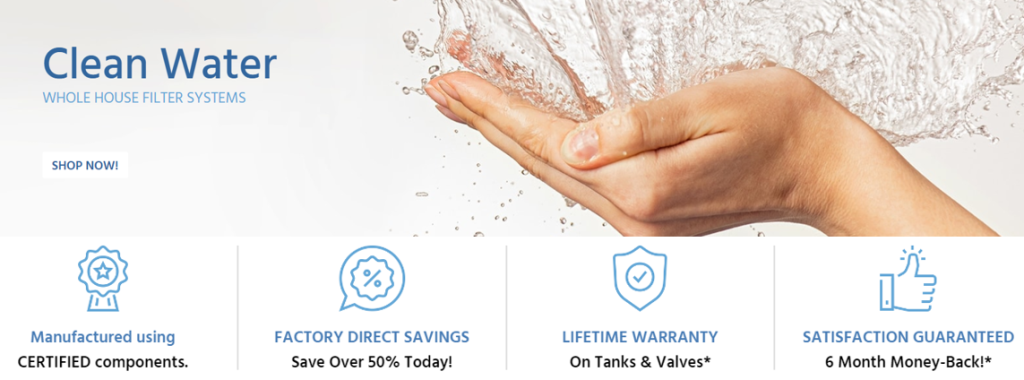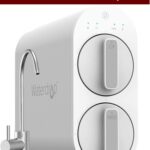Add more salt to the water softener.
If your water softener runs out of salt, it can’t continue to soften your water. This can be a problem if you have hard water, as it can lead to mineral buildup and cause your fixtures and appliances to become less efficient.
There are a few things you can do to fix this problem. First, check the salt level in the brine tank. If it’s low, you can simply add more salt. However, if the salt level is too low or if the brine tank is full of water, you’ll need to call a professional to service your water softener.
In the meantime, you can use a water filter to remove minerals from your water. This won’t soften your water, but it will make it safer to use.
Install a Home Water Filter & Get "Unlimited Safe Drinking Water" For Decades
Get Upto 55% Discount With a Lifetime Warranty & 6-Months Money Back Guarantee Free Shipping
SpringWell Water Filtration Systems: 100% American-Made & NSF Certified Water Filters and Water Softeners
What Do You Do When Your Water Softener Runs Out Of Salt?
You need to add more salt to the water softener.

If your water softener runs out of salt, you’ll need to add more to keep it working properly. Here’s a step-by-step guide on how to do it:
1. Locate the salt reservoir. This is usually located near the top of the unit.
2. Remove the lid and add the salt. Make sure to add the salt slowly so that it doesn’t overflow.
3. Replace the lid and wait for the unit to start working again. This usually takes a few hours.
4. Test the water to see if it’s been softened properly. If not, you may need to add more salt.
A water softener is a great way to improve the quality of your water. If you have hard water, it can cause problems like scaling and buildup in your plumbing. A water softener will remove these minerals from your water, making it softer and easier on your pipes.
If you have a water softener, it’s important to keep it filled with salt. Otherwise, it won’t be able to do its job properly. If you’re not sure how to add salt to your water softener, follow the steps above and you’ll be back up and running in no time.
How Do You Troubleshoot A Water Softener That Has Run Out Of Salt?
The first step is to check the salt level in the brine tank.
If your water softener has run out of salt, there are a few things you can do to troubleshoot the issue.
First, check the salt level in the brine tank. If the salt level is low, you will need to add more salt to the tank.
If the salt level is fine, the next step is to check the power supply to the water softener. If the power is off, turn it back on and see if the water softener starts working again.
If the power is on and the water softener is still not working, the next step is to check the settings on the water softener. Make sure the settings are correct for the type of water you have in your home.
If the settings are correct and the water softener is still not working, you may need to call a professional to service the water softener.
FAQ
Why Does A Water Softener Need Salt To Function?
How Often Should You Add Salt To A Water Softener?
Conclusion
If your water softener runs out of salt, you can either add more salt to the system or regenerate the system. Regenerating the system will clean the resin beads and remove the hard water ions that have been collected. Adding more salt to the system will simply replenish the salt that has been used.
If you’re still unsure about what to do when your water softener runs out of salt, leave a comment below and we’ll try to help you out.


